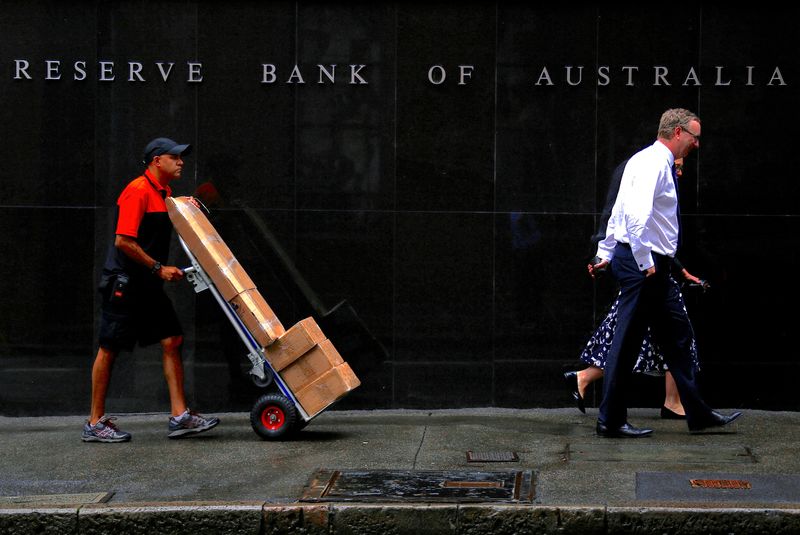By Wayne Cole and Stella Qiu
SYDNEY (Reuters) -Australia's central bank debated whether to raise interest rates at a policy meeting on Tuesday given there were upside risks to inflation, but decided to stay the course in a sign the hurdles to a hike remained high.
Wrapping up its June policy meeting, the Reserve Bank of Australia (RBA) kept rates at a 12-year high of 4.35% for a fifth straight meeting, but emphasised the need to be vigilant on inflation.
"While recent data have been mixed, they have reinforced the need to remain vigilant to upside risks to inflation," the RBA Board said in a statement.
At 3.6%, inflation remains well above the bank's target band.
"We need a lot to go our way if we are going to bring inflation back down to the 2-3% target range," RBA Governor Michele Bullock said at a media conference after the decision.
The Australian dollar ticked up 0.1% to $0.6622. Markets still imply no chance of another rise in rates, but did pare the probability of a cut as early as December to 44% from 65% before the decision. A rate cut is not fully priced in until April or May 2025.
Bullock said recent data had rung some alarms about inflation, though this did not automatically mean the case for a rate hike was getting stronger.
"They (the Board) wanted to make the point that they are alert to potential upside risks," she said.
Markets have heavily wagered on a steady outcome even as the economy almost halted in the first quarter and wage growth unexpectedly slowed, with still elevated inflation preventing rate cuts in 2024.
"The risks in the near term are still skewed towards another hike," said Shane Oliver, chief economist at AMP (OTC:AMLTF). "This makes the August RBA meeting, at which it will also review its economic forecasts, critical, and potentially live for a hike if June quarter inflation surprises on the upside."
June quarter inflation figures are out on July 31, just before the Board meeting on August 5-6.
Since the RBA's last meeting, data has come in largely as expected. The economy grew a meagre 0.1% on a quarterly basis, while wage growth slowed from 15-year highs and the labour market kept loosening at a slow pace.
However, an upward revision to consumption in the first quarter and a jump in consumer inflation to a five-month high of 3.6% in April suggest the upside risks remain. The hope is that cost-of-living relief from governments, including billions in electricity rebates, will help bring headline inflation lower in the second half.
Commonwealth Bank of Australia (OTC:CMWAY) (CBA) and National Australia Bank (OTC:NABZY) both noted a risk to their calls for a rate cut in November.

"The RBA Board does not want to lift the cash rate again," said Gareth Aird, CBA's head of Australian economics.
"But given the challenging underlying inflation backdrop, as well as a labour market that is loosening more gradually than expected, the runway is shortening between now and November. The risk to our call is increasingly moving towards a later start date for an easing cycle."